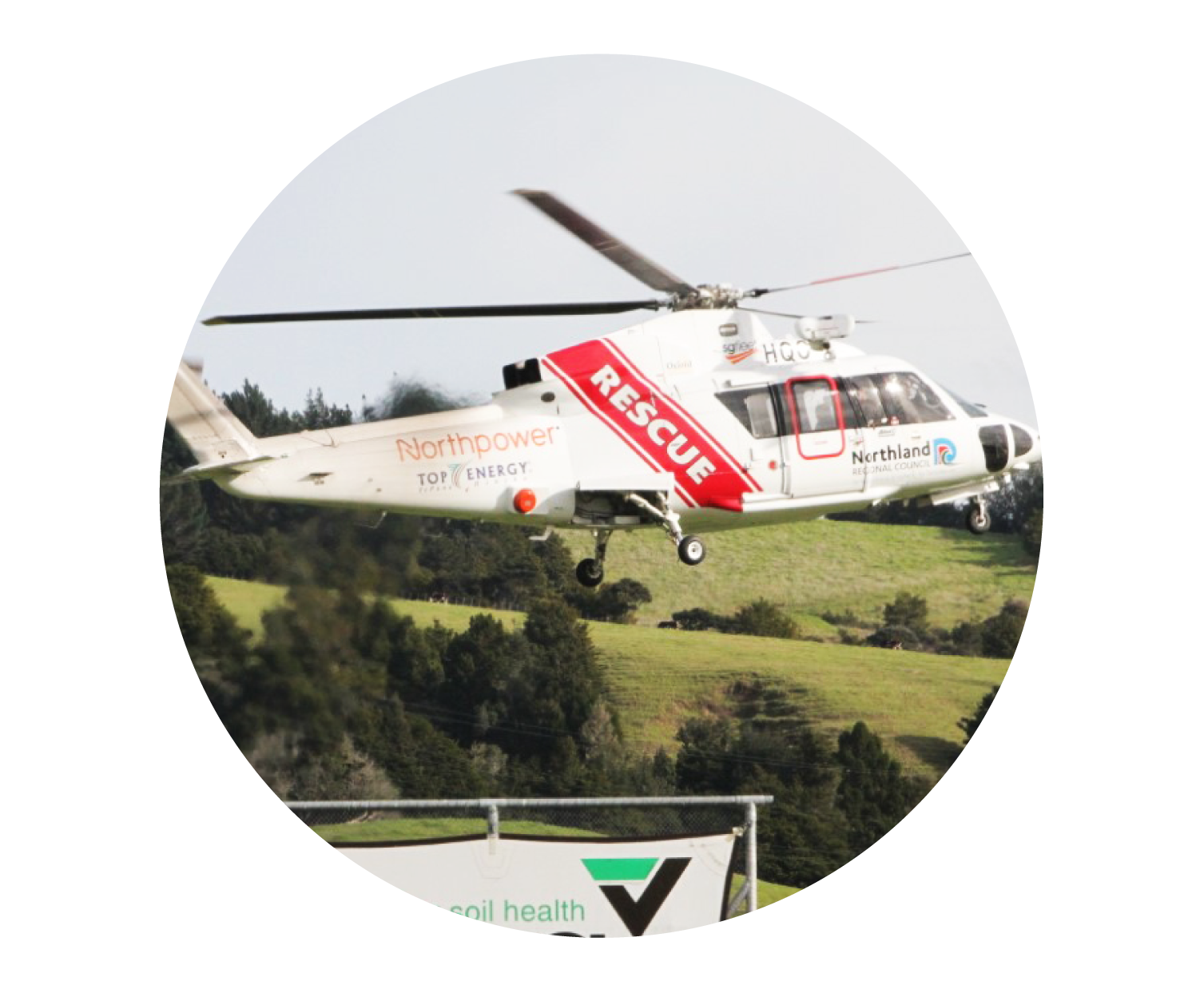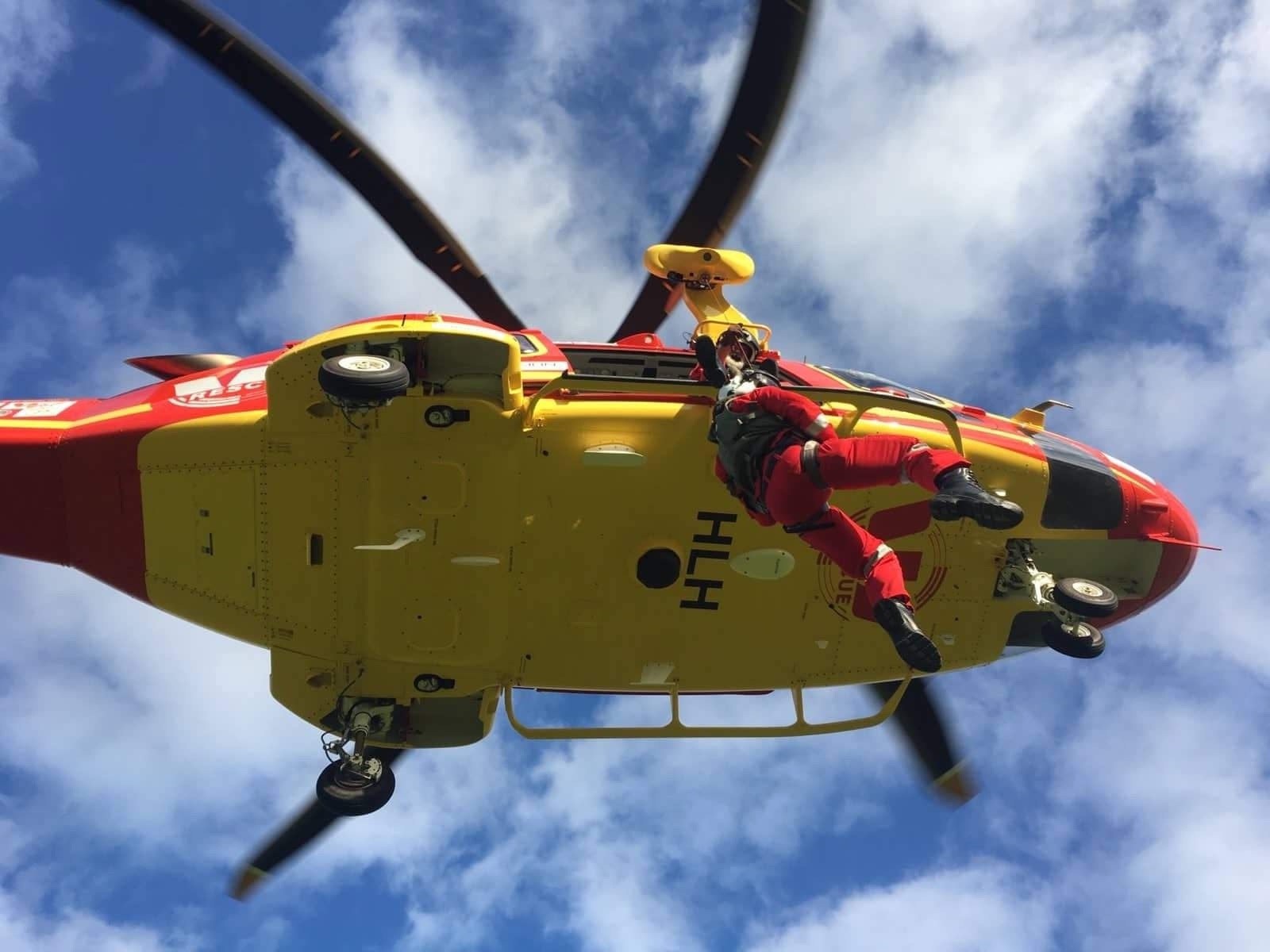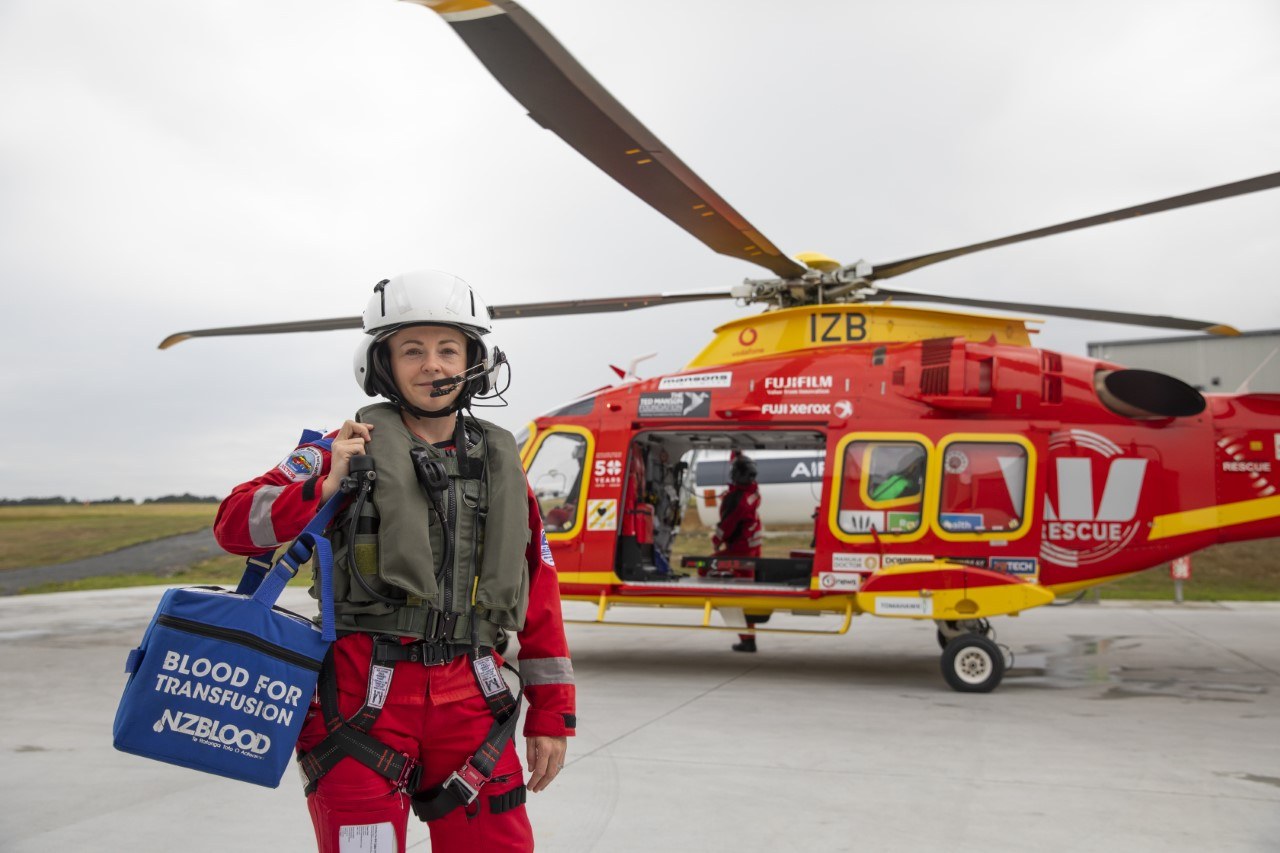Given that data entry in electronic health records is one of the contributing factors of burnout in hospitals, Northern Rescue wanted to integrate with other technologies to reduce data entry burden on their clinicians. They integrated with other systems such as Zoll (cardiac monitors) to enable physiological data to be transferred seamlessly into the aeromedical eCR and also plan in the near future to integrate with the NZ Ministry of Health National Health Index (NHI) database, to ensure the correct patient identifying data is captured while reducing data entry errors. This also allows for seamless integration across other NZ healthcare registries and their hospital system.
Overview
Northern Rescue Helicopter was formed in 2019 with the amalgamation of two well established aeromedical rescue organisations - the Auckland Rescue Helicopter Trust and the Northland Emergency Services Trust. They operate from bases in Ardmore, Tāmaki Makaurau (Auckland) and Whāngerei, Te Tai Tokerau (Northland), serving approximately two million people.
Industries
- Emergency Medical Services
- Clinical Services
Year(s)
Working with Air Maestro
Modules
Safety & Operations
Location
New Zealand
Combining SMS & eCR Developments in One Solution
Air Maestro was being used mostly as a safety reporting system until 2015, when Northern Rescue Helicopter expanded their use of the system to start recording their aeromedical electronic clinical records.
Alana Harper, Prehospital and Retrieval Medicine Doctor at Northern Rescue shares, “We have always liked that Air Maestro is a ‘one-stop repository’ for all our aeromedical organisational needs including safety, rostering and fatigue management. It made sense from a clinical governance perspective to combine our aeromedical electronic clinical record (eCR) with our safety management system (SMS); our Northern Rescue purpose being to provide early, optimal, and safe patient care that saves lives”.
Embedding the ECR within a cloud-based safety management system allowed clinical teams the versatility to capture data using a variety of methods. This included the innovation of wireless sharing of patient vital signs from critical care cardiac monitors directly into the clinical record – a first for Australasia.

“We have always liked that Air Maestro is a ‘one-stop repository’ for all our aeromedical organisational needs including safety, rostering and fatigue management. It made sense from a clinical governance perspective to combine our aeromedical electronic clinical record (eCR) with our safety management system (SMS); our Northern Rescue purpose being to provide early, optimal, and safe patient care that saves lives”.
Key Client Objectives and Challenges
As an aeromedical service, Northern Rescue works in multiple, often very different environments, with a high likelihood of having no connectivity. Alana notes that they required technology that was robust enough to support a harsh and remote work environment. One of the main changes they made was to embrace mobile and hand-held hardware technology and adapt the software to support this. Alana states, “This led to the development of our eCR on a progressive web application (PWA), which allows entering and saving of clinical records even when wi-fi or cellular connectivity is temporarily unavailable. This offline functionality is invaluable across the austere environments we work in”.
Another challenge was the variation in how aeromedical clinical data was being captured and reported on nationally. The Aotearoa (New Zealand) aeromedical sector is motivated to to standardise data collection to allow national and international continuous quality improvement and benchmarking. Working in collaboration with the other regional aeromedical services, Northern Rescue developed a standardised data dictionary for Aotearoa (New Zealand).


“This led to the development of our eCR on a progressive web application (PWA), which allows entering and saving of clinical records even when wi-fi or cellular connectivity is temporarily unavailable. This offline functionality is invaluable across the austere environments we work in”.
Implementation Process
Northern Rescue worked with the Air Maestro software development team to co-create user stories with the patient and clinical team at the centre, to understand workflows and working patterns to make the aeromedical eCR function ergonomically as part of Northern Rescue’s current workflow.
Internal stakeholder engagement was vitally important in this project. This included Northern Rescue flight crew, comprised of pilots, air crew officers, paramedics, and doctors and they worked to optimise user uptake through this inclusive approach to co-design. Two multi-day user engagement conferences were also held in Auckland in 2019 and 2021, with representatives from Air Maestro and all three aeromedical regions of NZ, to decide on exact requirements.
Alana says they strived to keep clinicians up to date with developments. “We included frequent updates in our monthly clinical governance meetings, offered group face to face and virtual learning and demonstrations and developed a training package which was uploaded to our online learning management system”.
“Most importantly, we continue to seek ongoing user feedback, with input from our Information Technology and Business Intelligence team members to continue adapting and improving”.
Since July 2022, the eCR connects both bases of operations within the Northern Aeromedical region, and will soon be implemented across the Central Aeromedical region of Aotearoa (New Zealand).

“The team at Air Maestro have always been accommodating and extremely flexible. We have been most impressed with their openness to innovation and responsiveness to our ideas and what we would like to achieve; specifically the consolidation of aeromedical and patient data into an integrated, cloud-based digital ecosystem”.
Feedback and Successes
Alana comments that the wireless sharing of vital signs into the patient’s record creates efficiency for the clinical teams, as it decreases the time and workload to manually enter this data. “It is improving data quality, since there are accurate timestamps with each set of vital signs. Anecdotal feedback on the integration with the cardiac monitors is generally favourable, with entering of physiological data only taking a matter of minutes now”.
The eCR allows for real-time clinical audit of critical care procedures such as advanced airway management, prehospital whole blood transfusion, and prehospital point of care ultrasound. In the future, this common dataset will allow for improved data sharing with New Zealand Clinical Networks (including the Trauma, Cardiac and Stroke networks), Te Whatu Ora - Health New Zealand, Te Aka Whai Ora – Māori Health Authority, the Accident Compensation Corporation, and the Ministry of Health.
“We are also pleased to be in the nascent phases of developing dashboards within Microsoft Power BI. Utilising this enhanced data capture will inform multiple workstreams for Northern Rescue, including the provision of our flight paramedic authority to practice (ATP)”.
Alana shares that all clinicians in their organisation are now completing an eCR and have therefore almost doubled the number of records and data they are gathering. “This is extremely important for our continuous quality improvement plus it supports our Northern Rescue key strategic objectives of the patient being at the centre of everything we do and excellence in aeromedical services. The aeromedical eCR allows us to contribute to the Ground and Air Medical Quality in Transport International Collaborative”.
“All clinicians were surveyed just before the go-live date for mobile working (PWA). We assessed the eCR usability using the System Usability Scale (SUS)[1]. The ECR scored 75 which places it in the GOOD category (the industry standard is 68). This also meant it out-performed and compared very favourably with multiple UK Emergency Medicine electronic health records (median score 53)[2]. Clinicians will be re-surveyed in early 2023”.

“Being able to work remote on handheld/mobile devices and being able to input clinical records in real-time now, it’s an absolute game-changer!”.
Achievements and Next Phase
“The team at Air Maestro have always been accommodating and extremely flexible. We have been most impressed with their openness to innovation and responsiveness to our ideas and what we would like to achieve; specifically the consolidation of aeromedical and patient data into an integrated, cloud-based digital ecosystem”.
“Being able to work remote on handheld/mobile devices and being able to input clinical records in real-time now, it’s an absolute game-changer!”.
In fact, thanks to the efforts of Alana, this project recently won the Health Informatics New Zealand (HINZ) Clinical Informatics Leadership Award.
The next phase of development will see an expansion of resources including Northern Rescue’s ICT and BI Analyst human resource to further support the project and boost efficiency.
_______________
[1] System Usability Scale (SUS) | Usability.gov & Brooke, John. (1995). SUS: A quick and dirty usability scale. Usability Eval. Ind. 189.
[2} Bloom BM, Pott J, Thomas S, et al Usability of electronic health record systems in UK Eds Emergency Medicine Journal 2021;38:410-415.
Feature Photo by Tom Roberton
